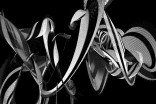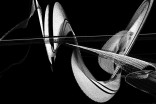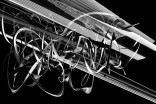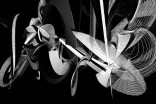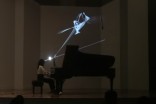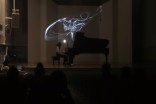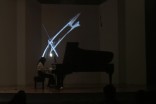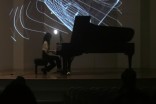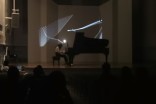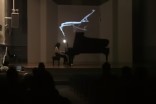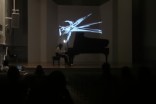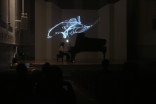video Link for users in China |
Choreographic Line Sketch No.3, 2010 + Haydn:Sonata in E major Hob. XVI: 31 (Excerpts), 1776 These are series of experiments on how "line" could react to sonic dynamics. We try to choreograph and embody a living spirit into the line. These lines consist of multiple joints which align in a hierarchical relationship and progress as a symphony of points, curves and plane based on sonic properties. Their complexities, motion and sensitivities could also be adjusted by another performer controlling a custom designed interface on iPad. We experiment on multiple configurations on how much it reacts to live music and another performer's control panel. It is to investigate how the various behaviors by a sonic driven media could affect an ensemble experience on the same and different repertoires. In Haydn's version, movement including the scale and motion of each joints react to music in realtime with its various sensitivities still listen to iPad controller as described above. |
video link for users in China |
Choreographic Line Sketch No.2, 2010 + Piazzolla:Libertango, 1974 For this Tango repertoire performed in Zhenzhou, "lines" are totally choreographed by a performer drawing on an iPad, thus creating a traditional trio experience. These lines reacts to several parameters on the iPad including its motion sensor(accelerometer) and various sensitivity slider control. |
video link for users in China |
Choreographic Line Sketch No.1, 2010 + Piazzolla:Libertango, 1974 During Tango performance in shanghai, "lines" are totally choreographed by a performer drawing on an iPad, they reacts to less parameters and mostly controlled by the position of the fingers. |
| snapshots |
| credit :
|
